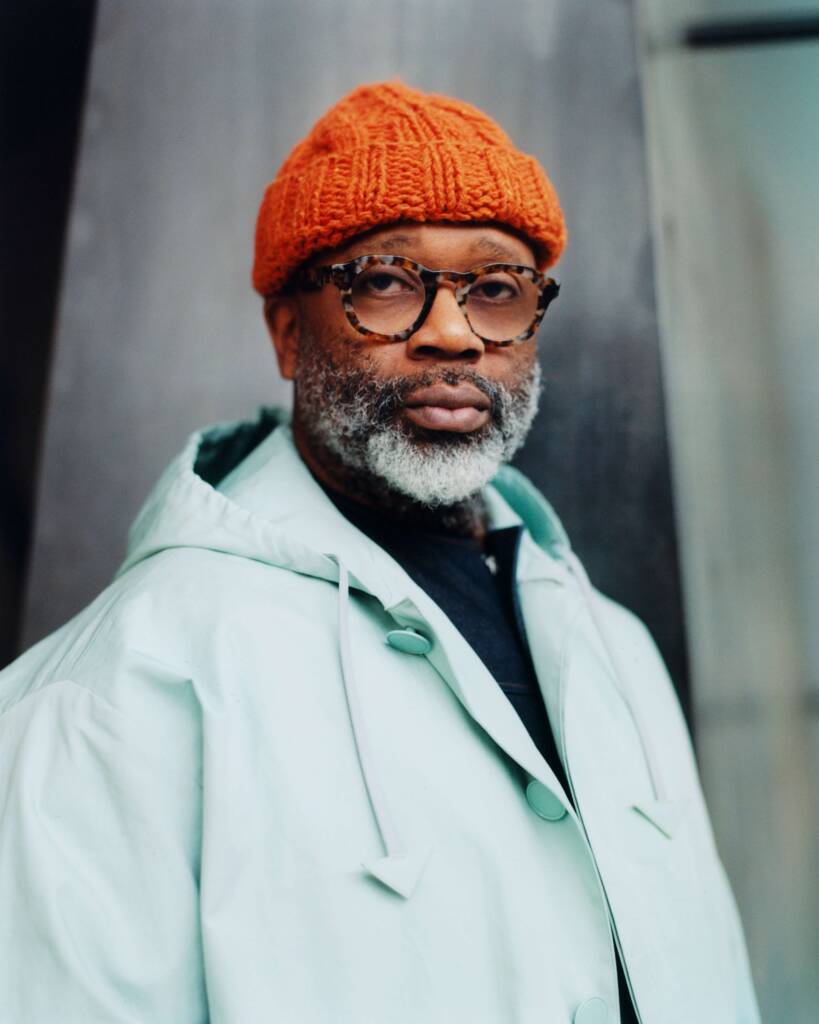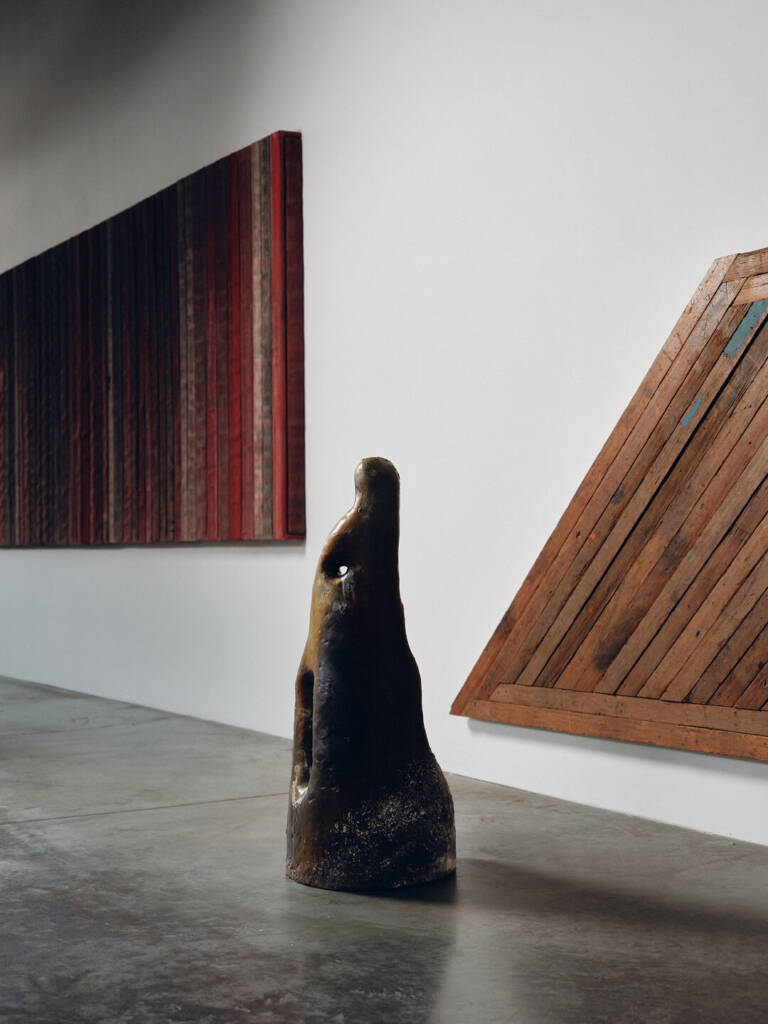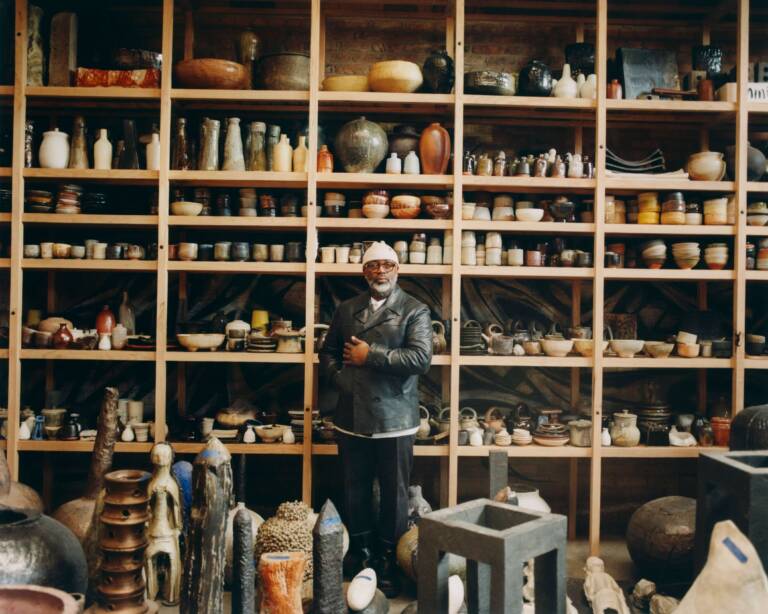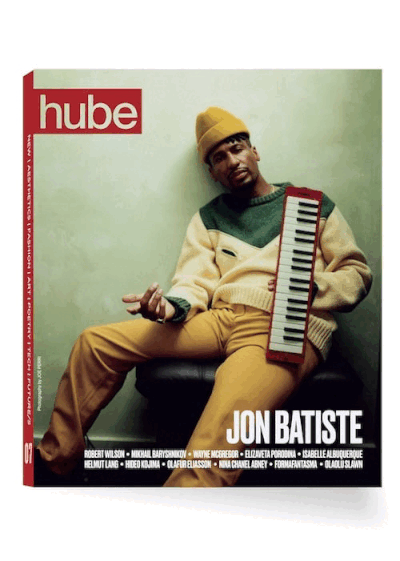

Theaster Gates is reshaping the relationship between art, community, and the built world. Through sculpture, performance, and architectural intervention, he explores themes relating to race, urban renewal, social justice, and the intersection of culture and place. Drawing from a background in urban planning, Gates uses materials and spaces as tools for social change. His practice challenges dominant narratives and recirculates cultural and economic capital to transform communities marginalized by systems of inequality.
In 2010, he founded the Rebuild Foundation, an ambitious and multi-faceted project aimed at revitalising underserved areas of Chicago’s South Side through cultural and community-led programs. Rebuild projects such as the Stony Island Arts Bank—a former bank repurposed as a cultural centre, archive, and gallery—illustrate how such locations can platform the arts, amplify marginalised voices, and create a shared sense of space. Across all scales, from intimate objects to large-scale interventions, Gates’ work demonstrates how art can catalyse change—transforming spaces and the communities who inhabit them.
Dive into our interview with Theaster Gates on creativity as a spiritual act, rethinking materials, and building communities through art.
hube: Thinkers like Aristotle and Aquinas explored the concept of an “intellectual soul,” believing that it connected human reason to the divine.
Theaster Gates: I wonder if a person that was deeply committed to combining the divine and humanity would ever fully articulate it as such. There was probably a time when the chasm between humanity and divinity was much narrower. I believe people knew and understood the divine because there were fewer distractions, fewer hurdles.
People could recognise their deep dependency upon nature, the land, their communities, and human ability. They recognised that there were things that they didn’t understand, things about their bodies, about the earth, about things beyond the earth that were hard to explain. People had time to reflect, to ponder, to debate, to grow their souls. That growth seemed to have had multiple consequences. It grew our understanding of language and arithmetic, of war, but it also helped us understand the complex colonial program—that one might even trump the divine with human order.
I spend a lot of my time thinking about the relationship between these two things. One’s capacity to imagine the beautiful and conceive of the invisible feels like craft. To give shape to ideas and to give concrete form to the things we think about. These might be ways of aligning our belief in the relationship between the earth and the unseen.
h: Working with archives often involves reflecting on the past to better understand the present. Does your experience with history give you hope for the future?
TG: Working with archives has helped me understand how rich and complex the past is. Let’s take my glass lantern slide collection as an example. That archive is a kind of history of art. It recognises so deeply the ways in which history, and the history of images, painting, sculpture, and architecture, have been shaped by the intelligences and preoc- cupations of humanity. It also demonstrates the ways in which creative leadership creates a genre, a style, even a trend. History is really a series of incidents in which new ideas and new technologies beget new forms, and those forms are imitated until the next form is conceived. In this way, we’re always creating a future. We are always calcifying history. They are the forms that help us survive.

